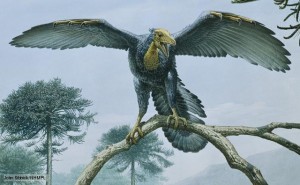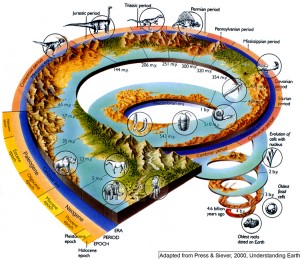The origin of bird flight is one of the greatest stories evolution has ever told us in the history of life on this planet. To imagine how organisms that once ran around on the ground have descendants that soar through the skies is truly phenomenal, and represents a truly great leap in increasing the awesomeness of these animals. The secret of how it came about though is hidden away in the fossil record, with the mysterious tale ever-shifting as our understanding of early birds and feather precursors evolved.
Did dinosaurs lactate..?
The fossil record is brutally frustrating; it mostly preserves only vestiges of deaths long past as body fossils, with occasional glimpses of life being gleaned from their surroundings and any trace fossils, or activity fossils that we might find. One question palaeontologists have long been seeking the answer for is how good were dinosaurs as parents? Modern birds are descended from dinosaurs, and are pretty awesome parents in their nesting, brooding, and raising of their chicks from birth until they can quite literally fly the nest. But birds are the only extant group of dinosaurs out of three major lineages.

Partial skeleton of an oviraptorid dinosaur brooding over a nest of eggs. Source.
Flying on the wings of dinosaurs
Archaeopteryx lithogaphica is probably the most iconic dinosaur ever. When it was first discovered, it was heralded as the holy grail of palaeontological findings, as it helped to consolidate the evolutionary continuum between theropod dinosaurs and modern birds. What it also represents though, is an example of the evolution of scientific thought through time. Palaeontologists, mechanists and developmental biologists have long puzzled about where exactly this ancient-winged half-bird half-dinosaur fits into the evolutionary tree of life. Perhaps of equal importance, is what it can tell us about the evolution of one of the most extraordinary biological innovations of all time – the development of wings and powered flight.
Co-evolution, the greatest show on Earth?
One of the great questions that Palaeontology poses is how did life and the Earth co-evolve together? This is especially so in the case of early life during the Phanerozoic period (540 million years ago until now), when complex multi-cellular life took off and ultimately came to dominate the planet. When one considers the vast number of potential factors involved in this, it can be pretty overwhelming. To start off with, you have organisms themselves which adapt through altering their physical appearance and functionality. Driving this, you have the environment and the ecosystems in which organisms dwell. How many parameters can you think off that may have some effect, any effect, on the life of an organism or population of organisms, that could have some impact on evolutionary trajectory? There’s a lot, right? Some of the major environmental factors include oxygen and carbon dioxide concentrations, nitrogen, temperature, humidity. You can find variations of almost any environmental variable nowadays, and correspond it to variability in the local biota. But what about during the Phanerozoic? How much can we still see left preserving this great orchestra of ever-changing life and planet?


